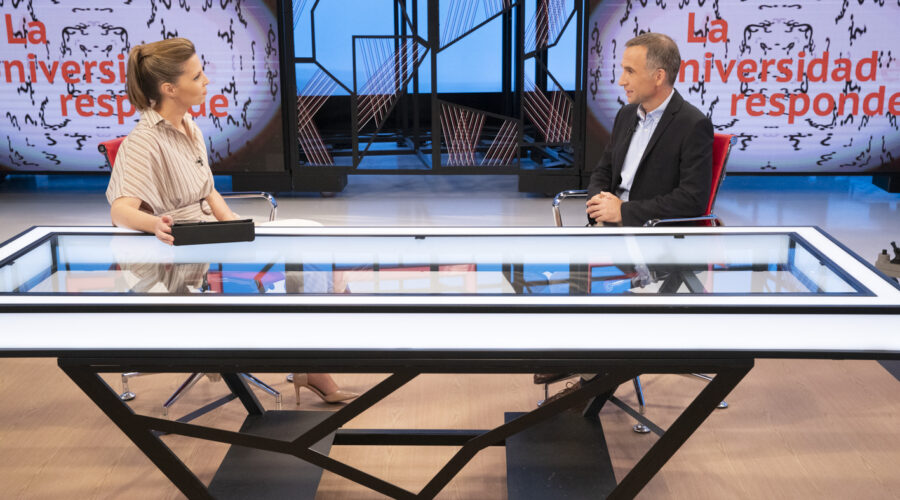IMDEA Networks

Albert Banchs talks about the present and future of 5G in 'La Aventura del Saber'
A meeting with a classic TVE broadcaster to talk about advances in this technology and other telecommunications-related matters
18 June 2021

Albert Banchs, Director of IMDEA Networks Institute and Professor of Telematics Engineering at the University Carlos III of Madrid, was interviewed on the Spanish La 2 channel’s ‘La Aventura del Saber’ program, a classic of Spanish public television, that is also rebroadcast on TVE’s International Channel. Since 1992, the program (the result of a collaboration agreement between the Ministry of Education and RTVE) has been broadcast from Monday to Friday (from 10 to 11 am), offering viewers a broad spectrum of content covering culture, science, technology and the environment, with reports as well as on-set interviews.
Banchs spoke with Mara Pettersen, co-host of the program and with its director, Salvador Gómez Valdés, about the present and future of 5G technology. He began by highlighting how the new generation of mobile telephony, “revolutionizes the entire network architecture, as a new paradigm, not only to meet very extreme requirements in terms of data speed, but also in other metrics, such as latency, reliability and device density. To do this, we are using virtualization technology, converging with cloud computing and replacing 4G communication-specific hardware with general-purpose computing platforms that run the network functionality through software (much more reliability and efficiency and, most importantly, customization of network instances with network slicing”.
This is a new scenario that, as discussed during the interview, will allow users to access services and applications with greater depth than 4G: “self-driving cars, virtual and augmented reality, the ‘tactile internet’.” Banchs explained that “Beyond the user, another of the objectives is to reach economic sectors, the ‘vertical sectors’ that, until now, have not used the network to its full extent. To this end, we are working with a hospital in France, with SAMUR in Madrid, with robot control, in the airports of Hamburg and Athens, a museum in Italy… they can all benefit from the advantages of 5G”.
Technological change, social change
The talk was a reflection on the influence of technology on society (how we communicate, work, and move around), an environment in which Banchs highlighted specific cases: “For example, a ‘smart T-shirt’ will allow us to monitor our health in real-time and, if necessary, communicate with specialists”. He also pointed out that, apart from our communication with objects, the objects themselves will be connected to each other: “To do this, we have to replace elements in the base stations and in the central part of the network, the ‘core’, all investments that will take some time to achieve breakeven point”. For the time being, and as a transition, these elements reuse 4G infrastructures, in the so-called Non-Standalone mode.
Banchs highlighted how Spain is in a good situation for this deployment, especially in its large cities (“it is important to cover 80% of the population with a fixed, fiber optic network; in fact, the telecommunications network has withstood the 30% increase in use very well… imagine a similar increase in traffic or electricity consumption”). And finally, he had a few words to say about data privacy on the internet, another area of study for IMDEA Networks Institute researchers: ” This is very difficult to control, for various reasons including technological complexity and commercial interests and despite it being subject to European legislation and guarantees. We carry out studies all the time that show how more than 90% of applications leak personal data, even those pre-installed on our mobiles, which we generally presume to be more secure”.



Recent Comments